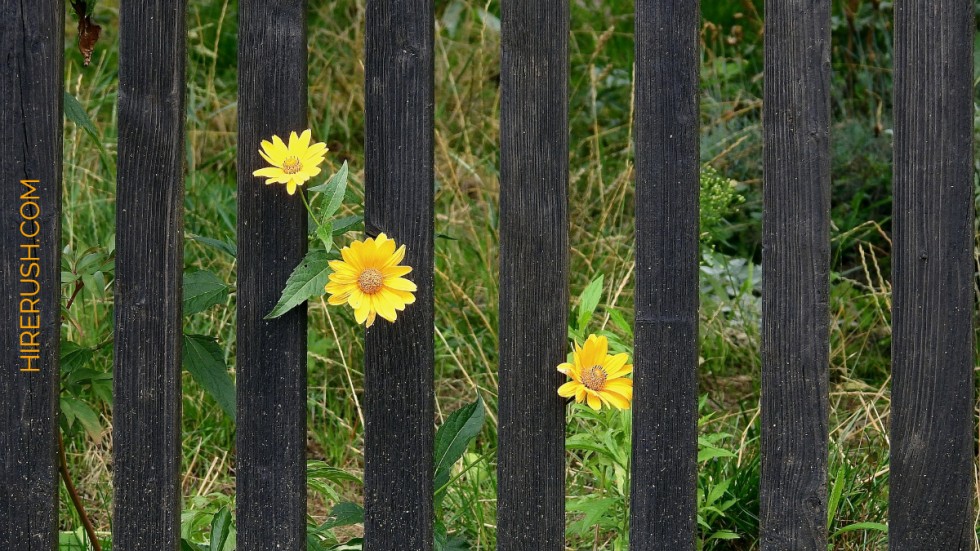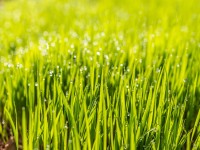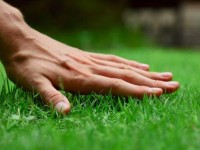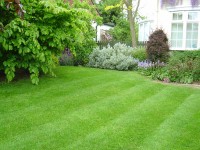Lawns require special care, more watering and general attention in summer than ever.
Consistent maintenance routine and well-timed ‘rescue’ actions should keep your grass in good state even despite unfavorable weather conditions.
You always have to be on the lookout to be able to notice any negative tendencies and uproot them on the outset.
There are a couple of challenges when it comes to keeping your lawn green and healthy during the hot season.
And, here’re some tips to help you out deal with them.
Summer lawn watering specifics
The first and probably the toughest lawn duty is making sure that your grass doesn’t suffer from dry patches and remains green even after the rainless periods.
Unfortunately, watering your grass doesn’t solve the problem completely. But it’s definitely one of the key elements of retaining your grassplot in proper condition.
So, solid summer lawn watering means:
- Early watering – pull out your water hose and turn on your sprinklers right when the sun has just risen.
That will be an ideal situation, but anything between 5 a.m. and 7 a.m. will do. This way you’ll ensure that the sun won’t burn out the grass leaves through the water drops.
In addition to that, your lawn won’t turn into the wet attraction for fungus, which normally becomes active closer to the twilight. - Generous watering – you need to make sure that the roots get enough moisture, but not the leaves or the thinnest top layer of soil.
That’s why it’s better to water not too often (like once or three times a week depending on the temperature and possible rainfall), but deep, than to turn your sprinkles on every single morning for a couple of minutes.
Generally, 1 -1,5 inches of ‘precipitation’ should set your lawn for a week. Again, take into account current weather conditions and your soil’s characteristics. - Preventing the lack of water – even the slightest sings meaning that your lawn doesn’t receive enough moisture may be noticed early enough to stop degradation processes.
For instance, if you see that the grass’s leaves have that unhealthy bluish color or/and they curl up even a little bit, you should probably increase the amount of water you give to your lawn. - Arranging an irrigation system with timer – to keep the watering routine consistent even if you can’t devote time to lawn care or when you’re travelling.
Moreover, it makes lawn care more effective due to minimal water loss and equal water distribution.
Go to HireRush.com to post a request for sprinkler repair and installation providers to get reached out by those who’re able to install such system at your property.
Make sure to leave short details of the job. Leave your request here - Conserving water – people who live in drought areas know the struggle of keeping their lawns alive when the nature resists their efforts.
When low water supply during hot season is not designed to water the lawn in every single yard heavily, you have to plan in advance and plant heat-resistant types of grass.
Moreover, irrigation systems, sprinklers set up to water grass, but not walkways and streets as well, long, but less frequent watering sessions add to water conservation as well.
Summer lawn mowing hints
The next issue is related to maintaining your grass at the most optimal length. That leads us to regular weekly moving and choosing proper blade settings.
The importance of moving routine consists of the fact that when the leaves are not too overgrown and not too cropped, the lawn stays in its best condition.
And it’s related not only to its look and functional points. Decent length of the grass ensures that the lawn is able to resist and withstand quite tough weather circumstances. And, taller grass is proven to keep the soil moist longer.
Thus, as lawn care pros note, cutting the top of the grass leaves to end up with 3-3,5’’ tall lawn is the best summer lawn mowing choice.
Go a little bit higher during the drought to let the grass store up more moisture in its leaves. This will allow you to water less often as well.
Don’t go without mowing for too long though, as if you chop more than 1/3 of the leaves’ length off, you’ll subject your lawn to stress. And that will deteriorate is condition.
Weeding, fertilizing and fixing dry lawn patches in summer
- Don’t forget to carry out lawn weeding sessions to pull out any random weed and mushroom growth that doesn’t allow your lawn thrive in its full force.
Weed control mixes applied early in the season will make your task much easier. - Don’t overuse grass fertilizer. Otherwise, excessive growth will make your mowing task even harder.
One summer ‘feeding’ with nitrogen-rich mixes will do the job. Use a good-quality spreader.
Visit Scotts.com to learn more about fertilizing products. - Grass clippings are natural fertilizers you don’t want to toss away. Distribute those evenly all over the lawn after you finish cutting the grass.
Don’t use too much not to cause poor drainage and soil ‘breathing’ issues. - Make sure to clean your dog’s outside ‘potty’. Try to train your dog to use the grass free space in your yard to take care of its business to avoid brown dead grass patches.
- Let a lawn care specialist inspect and treat your lawn if you suspect that it might be diseased (like patch diseases, dollar spots).
- Aerate the soil, stop high lawn traffic and remove thatch from the grass during the drought season.
This is how you’ll make sure that your lawn makes the full use of the moisture it manages to receive. - Rejuvenate your lawn after it’s gone dormant by going back to frequent watering.
But, you need to start small and increase the amount of water gradually. Apply some fertilizer after two weeks of such watering practice.





